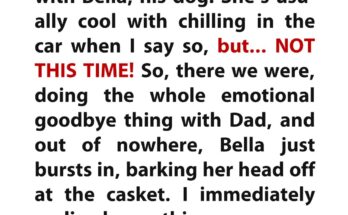Popcorn lung — the name may be quirky, but the condition it describes is anything but. As brightly colored vape pens and candy-like flavors lure the youth, doctors are seeing a rise in respiratory complications.
Experts are now sounding the alarm, warning that behind the clouds of mango mist and cotton candy vapor lies a chemical danger that bypasses the body’s defenses and heads straight for the lungs.

The Hidden Danger Behind the Vapor
A teenager in the United States made headlines after developing a rare lung disease known as popcorn lung following three years of secret vaping. The condition, officially called bronchiolitis obliterans, is serious, permanent, and incurable.
It causes inflammation and scarring in the smallest airways of the lungs, making breathing difficult and often resulting in symptoms like constant coughing and shortness of breath.

A teenager in the United States made headlines after developing a rare lung disease known as popcorn lung following three years of secret vaping. The condition, officially called bronchiolitis obliterans, is serious, permanent, and incurable.
It causes inflammation and scarring in the smallest airways of the lungs, making breathing difficult and often resulting in symptoms like constant coughing and shortness of breath.
Used to create a buttery flavor, diacetyl was later identified as the trigger for severe lung damage in those exposed to it over time. The same chemical has since been found in some vaping liquids.
When heated and inhaled, diacetyl becomes toxic. It inflames and scars the bronchioles — the tiniest air passages in the lungs — making airflow increasingly restricted.
While diacetyl has been banned in e-cigarette products in the EU and the UK, it remains legal in the United States and other regions. Illicit vape products, which often bypass safety regulations, pose an even greater risk.
Worryingly, diacetyl isn’t the only concern. Other hazardous chemicals linked to popcorn lung include acetaldehyde, formaldehyde, ammonia, sulfur dioxide, chlorine, hydrochloric acid, and even fumes from metal oxides.
The presence of these chemicals in e-cigarette vapor has been documented, and when inhaled regularly, they may trigger the same damaging effects.
Even in vape liquids that don’t contain diacetyl, replacement flavoring agents like acetoin and 2,3-pentanedione may carry similar dangers. According to experts, over 180 different flavor compounds are used in e-cigarette products.
Once heated, many of these break down into new chemicals — some of which have never been studied for safety when inhaled. This creates a risky and unpredictable mix every time a person vapes.
Popcorn lung has also been linked to other causes, including certain infections (like respiratory syncytial virus and specific forms of pneumonia or bronchitis), autoimmune disorders such as rheumatoid arthritis, and complications in organ transplant recipients.
In all these cases, what remains constant is the damage to lung tissue and the narrowing of airways. However, symptoms don’t always appear right away.
In the early stages, someone with popcorn lung might feel fine, only to later experience symptoms such as a persistent cough, breathlessness during physical activity, wheezing, or excessive tiredness.
In some instances, people may develop fevers, night sweats, rashes, or produce mucus when coughing. There is no known cure for popcorn lung. Once the lungs are damaged, the only options are treatments that ease symptoms and slow the disease’s progression.
Because of this, avoiding exposure to harmful chemicals in the first place is the only reliable form of protection. Still, for many teens and young adults lured by the promise of flavored vape products, that kind of prevention is not as easy as it sounds.
Life After Diagnosis – Preventing and Managing Popcorn Lung
Read More Full AITA Story: https://news.amomama.com/457139-experts-ring-the-alarm-over-popcorn-lung.html



I have witnessed that intelligent real estate agents all around you are warming up to FSBO Marketing. They are knowing that it’s not just placing a sign post in the front property. It’s really with regards to building human relationships with these traders who sooner or later will become consumers. So, once you give your time and effort to encouraging these traders go it alone : the “Law of Reciprocity” kicks in. Interesting blog post.
Hello very nice blog!! Guy .. Excellent .. Superb .. I will bookmark your web site and take the feeds I’m satisfied to find numerous helpful info here within the publish, we’d like work out more techniques in this regard, thanks for sharing. . . . . .
Hello.This post was really remarkable, especially because I was browsing for thoughts on this issue last Saturday.